15 Types of Outdoor Succulents (With Pictures)
-

- Last updated:

Outdoor succulents are a great way to add life to your yard without adding too much to your to-do list. After all, succulents are easy to grow and maintain due to their hardiness, but they are also unique and beautiful for landscaping purposes.
Although there are thousands of succulents, some are more popular for outdoor growth than others. Learn about 15 types of outdoor succulents below.
The 15 Types of Outdoor Succulents
1. Agave
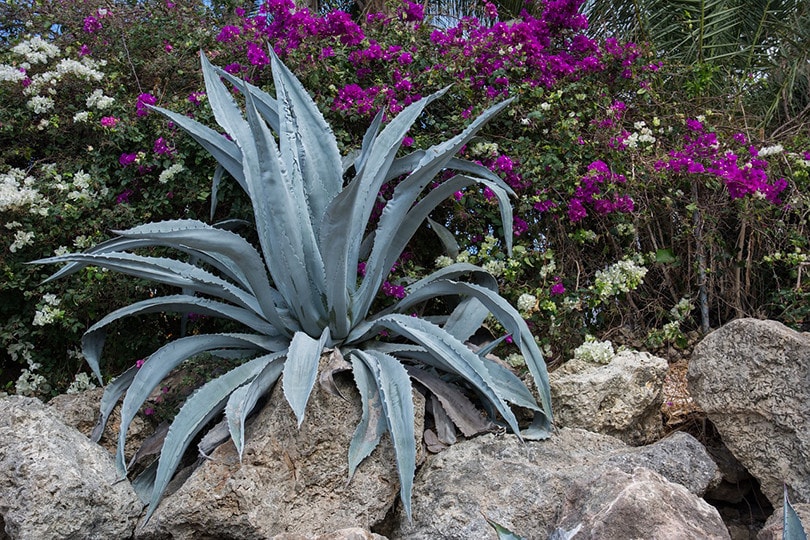
| USDA Hardiness Region: | 5–11 |
| Sun: | Full sun |
Agave is one of the most popular types of succulents. It is native to the Americas, and they grow quickly and prolifically in the ground. You can identify Agave plants because of their large size, smooth leaves, and sword-shaped leaves.
There are many different types of Agave plants. Some of the most popular include Agave Americana and Queen Victoria Agave, but there are many you can try. Most of the species are very large and easy to care for.
- Easy to care for
- Large
- Many species
- Needs a lot of sun
- Needs a lot of room to grow
2. Aloe
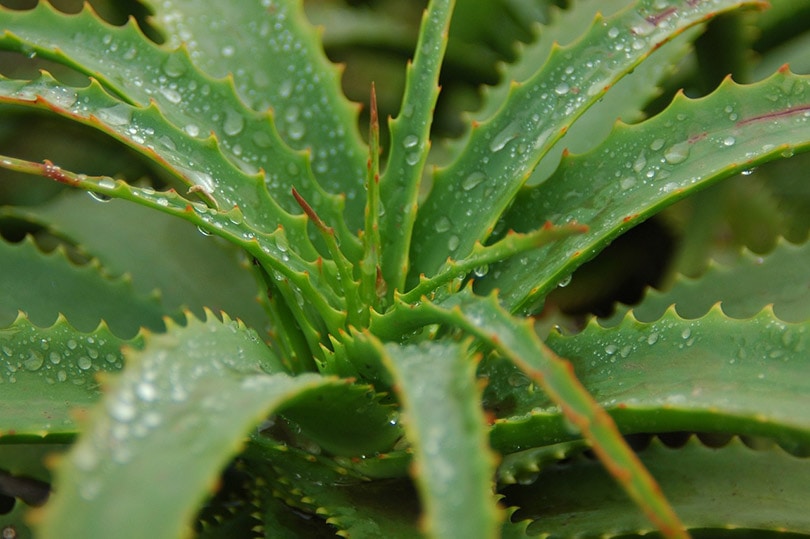
| USDA Hardiness Region: | 8–11 |
| Sun: | Full sun |
Aloe is another popular outdoor succulent. This succulent can be grown inside or outdoors, but outdoor aloe has showy blooms that are beautiful in any yard. This plant is native to the Mediterranean, Africa, and Madagascar.
As you probably know, some Aloe plants can be used to treat sunburns, but they also have vibrant blooms that are often mixtures of orange, red, and yellow. Aloe grown in a pot might only be a few inches tall, but some can grow to be as tall as trees. Aloe Vera is the most popular species, but there are others you can grow outdoors too.
- Many species
- Easy to find
- Used for medicinal purposes
- Needs full sun
3. Crassula
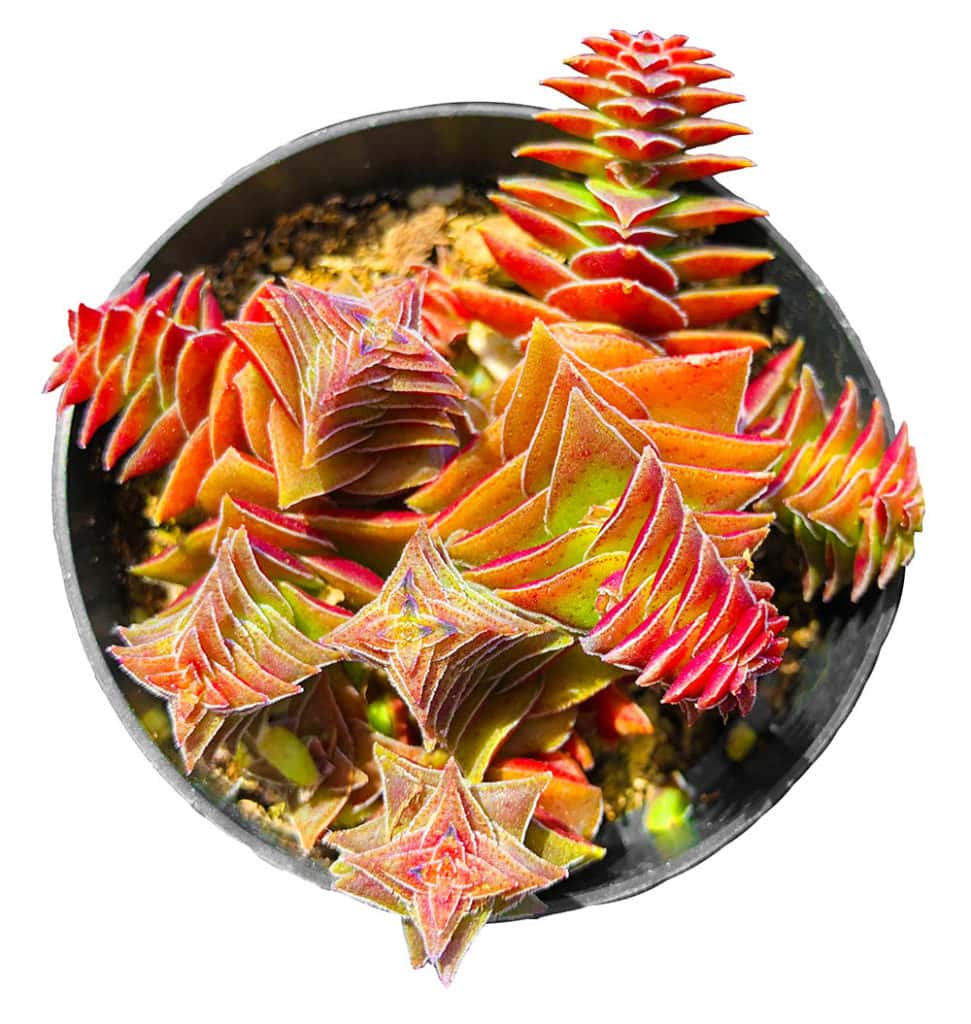
| USDA Hardiness Region: | 9–12 |
| Sun: | Partial shade |
Crassula doesn’t quite look like other succulents, but it is just as beautiful and easy to care for as the more traditional options. It looks different because it has dense foliage that is often shades of red and orange. This makes Crassula a great pick if you want to add a pop of color to your succulent garden.
Just like the other succulents on this list, there are many different Crassula species you can consider. Some Crassula species will have branching stems, but others may be low to the ground. Pick a species based on how much space you have in your yard.
- Many species
- Beautiful
- Vibrant colors
- Does not tolerate cold
4. Aeonium
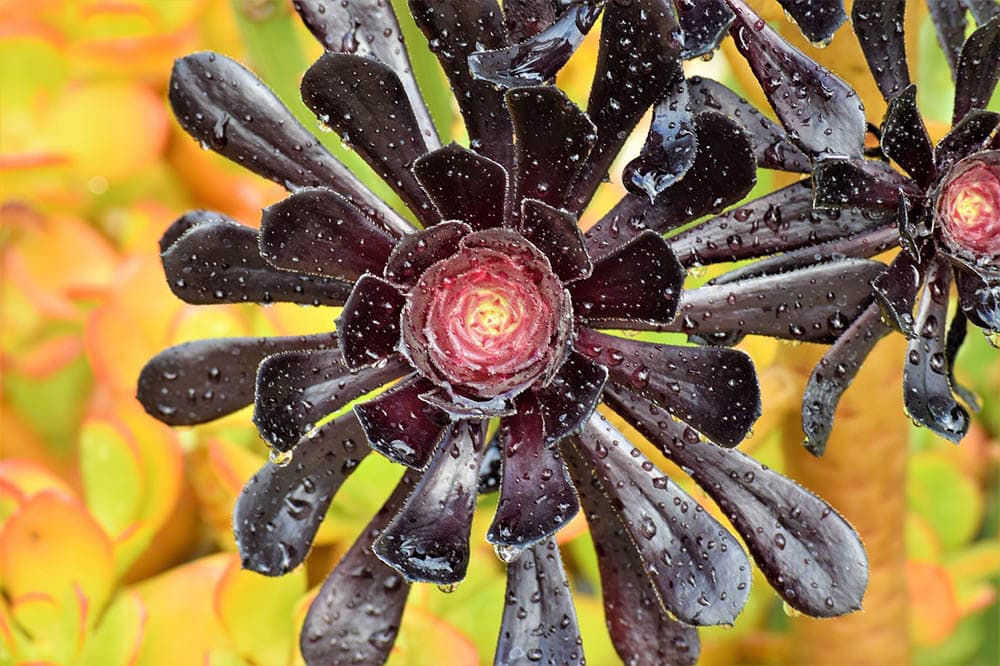
| USDA Hardiness Region: | 9–11 |
| Sun: | Full sun to partial shade |
Aeoniums have a rosette figure, which means they resemble flowers. Their leaves almost look like petals and are often dark purple to brown. The center of the leaves is always a slightly different color. In many cases, the center is green and fades out to dark purple.
Aeoniums can withstand incredibly hot conditions. This explains why they fall within hardiness zones 9–11. That being said, they typically go dormant in the summer. The plant needs well-drained soil and a sunny location.
- Beautiful
- Intricate petals
- Tolerates extreme heat
- Does not tolerate cold
- May go dormant during the summer
5. Echeveria
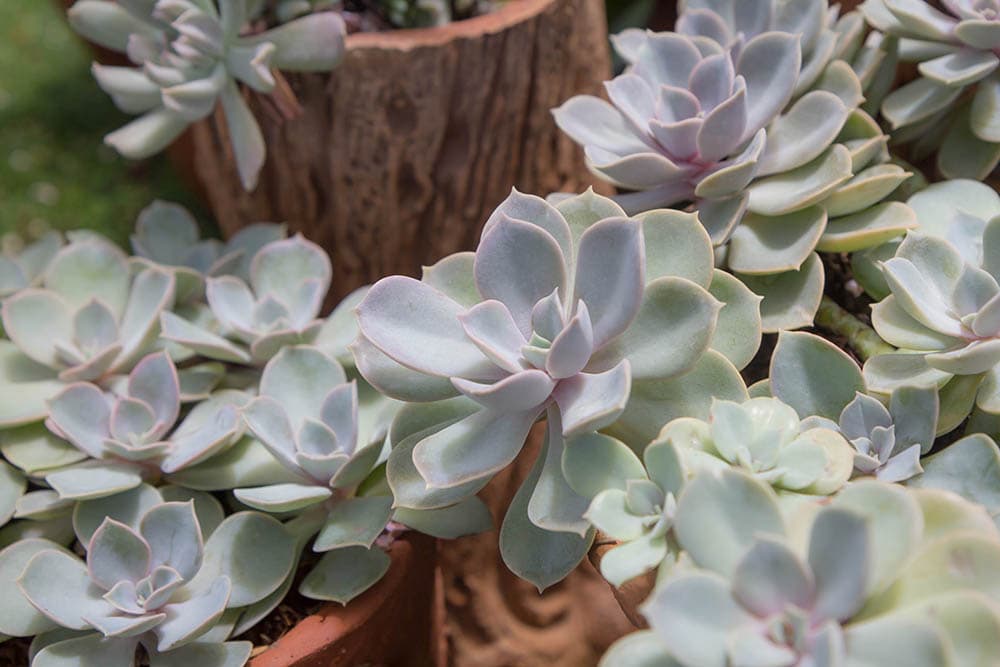
| USDA Hardiness Region: | 9–11 |
| Sun: | Partial, indirect sun |
Echeveria is one of the most beautiful succulents. It has a rosette or flower-shaped design that is intricate and stunning. They can come in many colors, including green, gray, pink, red, and white. All the leaves have a green or green-gray coloration.
Echeveria comes in many species, which explains the color variations. It is a good option for a variety of gardens, including rock gardens. In fact, Echeveria is one of the most popular succulents for zen gardens because of its intricate swirl design and hardiness.
- Beautiful
- Great for rock gardens
- Many species
- Does not tolerate direct sun well
- Does not tolerate cold well
6. Dudleya
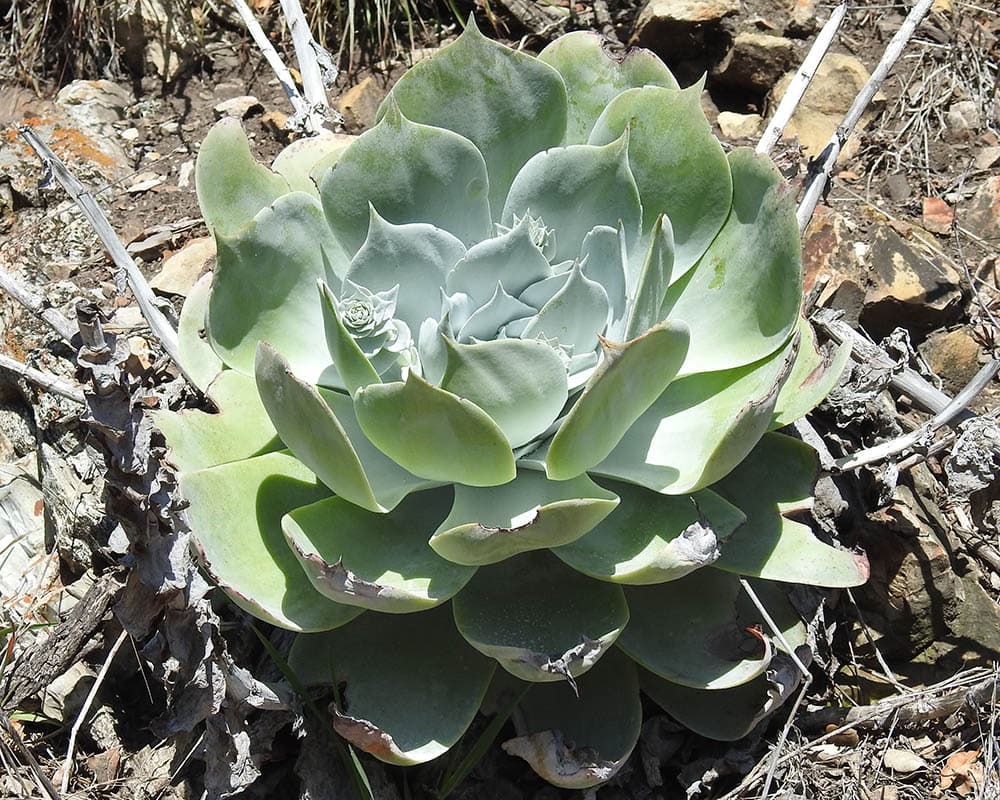
| USDA Hardiness Region: | 9–12 |
| Sun: | Full sun |
Dudleya is native to Baja California and the southwestern United States. This succulent has a beautiful flower shape, making it almost look like it has petals. Its petals have various colors of green, purple, gray, and red. This plant looks a lot like the above-mentioned Echeveria, though the coloration is different.
Dudleya is a popular plant in rock gardens and gardens located on slopes. They are even known to attract hummingbirds because of their long stalks. In other words, Dudleya can fit into just about any garden, even more unique ones.
- Unique appearance
- Great for unique gardens
- Can attract birds
- Does not tolerate cold well
- Needs a lot of sun
7. Lithops
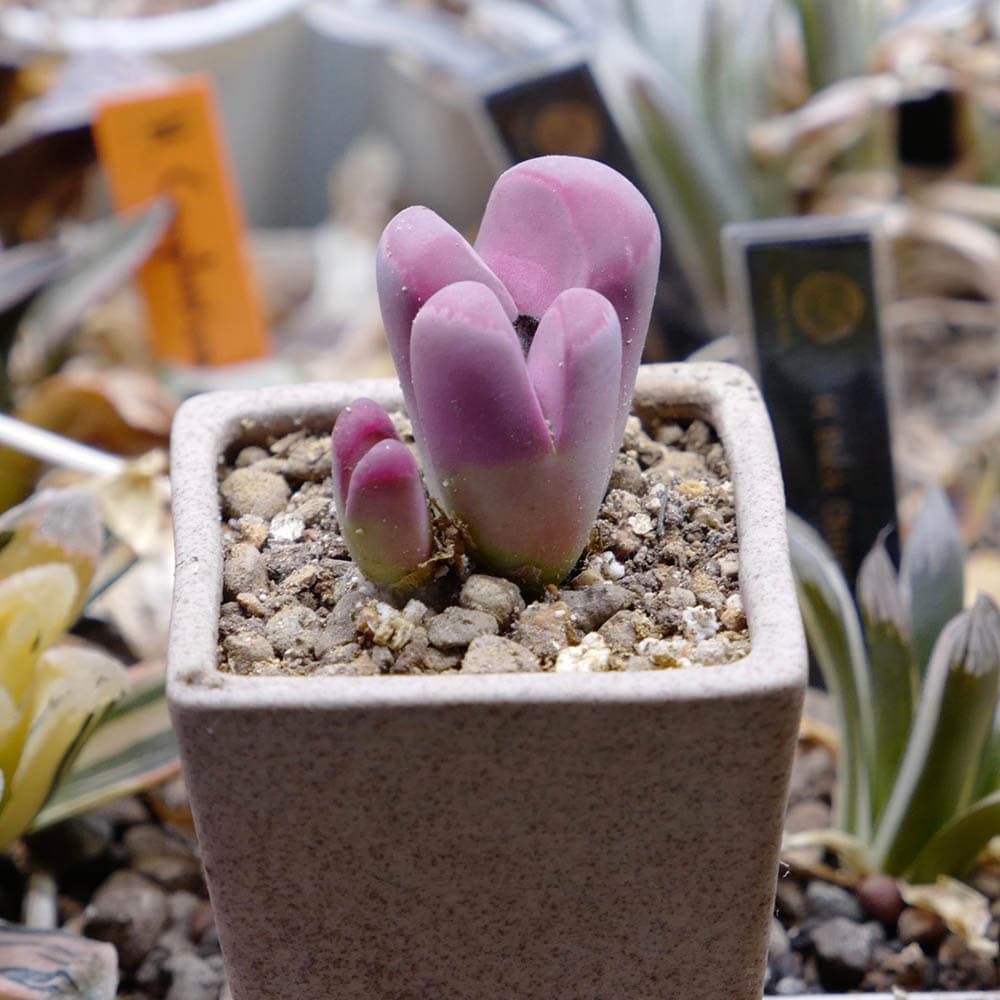
| USDA Hardiness Region: | 10–11 |
| Sun: | Full sun |
Lithops, sometimes called Living Stones, are quite unusual. As its nickname suggests, Lithops look almost like stones because they grow flat and fat. These plants can withstand a lot of harsh sunlight, which means they do great in areas with a lot of sun.
Lithops are not a good option if you want a plant to grow quickly. Instead, these plants are slow growing, but they will eventually grow into small clusters. As a result, these succulents are best as accent pieces.
- Withstands extreme sun and heat
- Unique plants
- Great filler plants
- Takes a long time to grow
- Does not cover a lot of space
8. Haworthia

| USDA Hardiness Region: | 9–11 |
| Sun: | Indirect sun |
Haworthia is native to South Africa. Its most popular species is the Zebra Plant, but it is also similar to Aloe Vera. Much like Aloe Vera, Haworthia has a translucent gel on the inside.
There are many different types of Haworthia, but the Zebra Plant is the most popular. Depending on the species you get, Haworthia can come in many sizes, colors, and shapes. Most species prefer shade and milder climates. Do not overwater them because they die easily.
- Comes in many species
- Great for shady gardens
- Easy to overwater
9. Graptopetalum
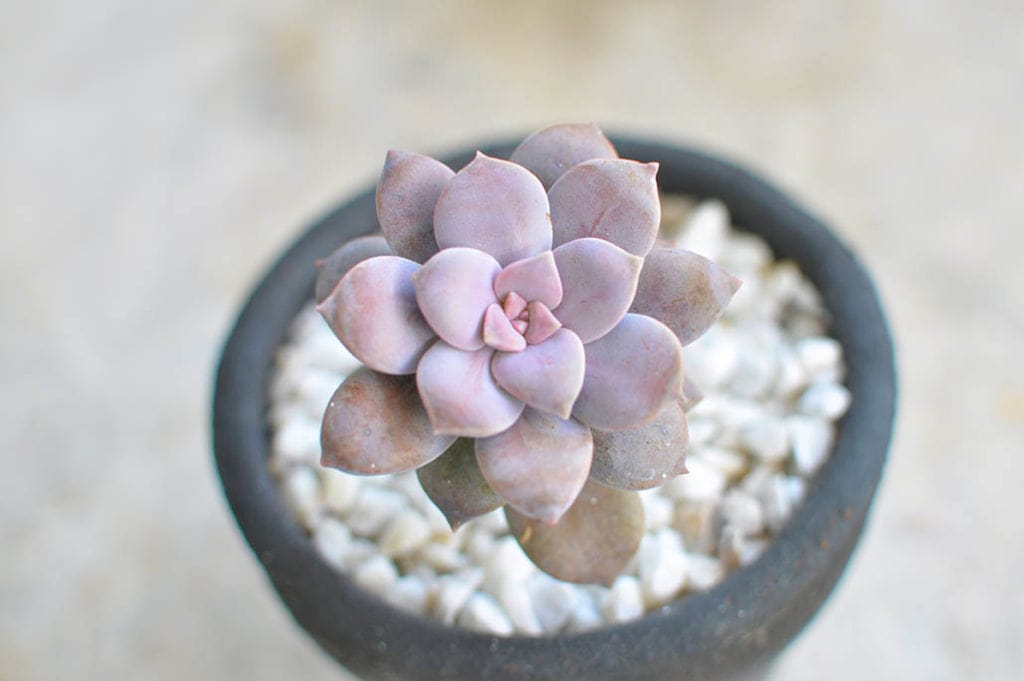
| USDA Hardiness Region: | 7–11 |
| Sun: | Full sun |
Graptopetalum is native to the southwestern United States and Mexico. This succulent is unique because it can actually survive some frost. Some can even be revived after being in temperatures as low as 20°F.
In addition to being more resistant to frost and cold temperatures, these plants are beautiful. They have a flower-shaped design. They typically have a fleshy white or light gray color with pink and red tints. You can grow Graptopetalum as ground cover in rock gardens, but you can also grow them in hanging planters so that they spill and cascade everywhere.
- Tolerates cold weather
- Beautiful
- Can be grown in many ways
- Needs a lot of sun
10. Sedum
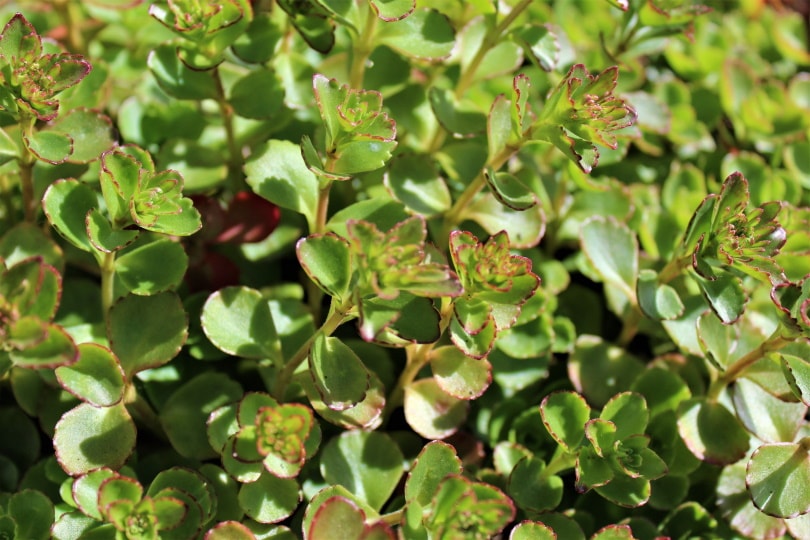
| USDA Hardiness Region: | 3–11 |
| Sun: | Full sun |
When most people think of succulents, Sedum is not the first plant to come to mind simply because it does not appear like most other succulent types. Still, it is one of the most common succulents to find outdoors. Sedum has fleshy leaves and small flowers that almost look like stars.
You can grow Sedums in many gardens. They are popular in rock gardens because they add a lot of texture and color in just a small space. They are also popular in banks. There are many species you can consider, some being small and trailing while others are large and upright.
- Many species
- Can survive many conditions
- Perfect for a variety of gardens
- Needs a lot of sun
11. Kalanchoe
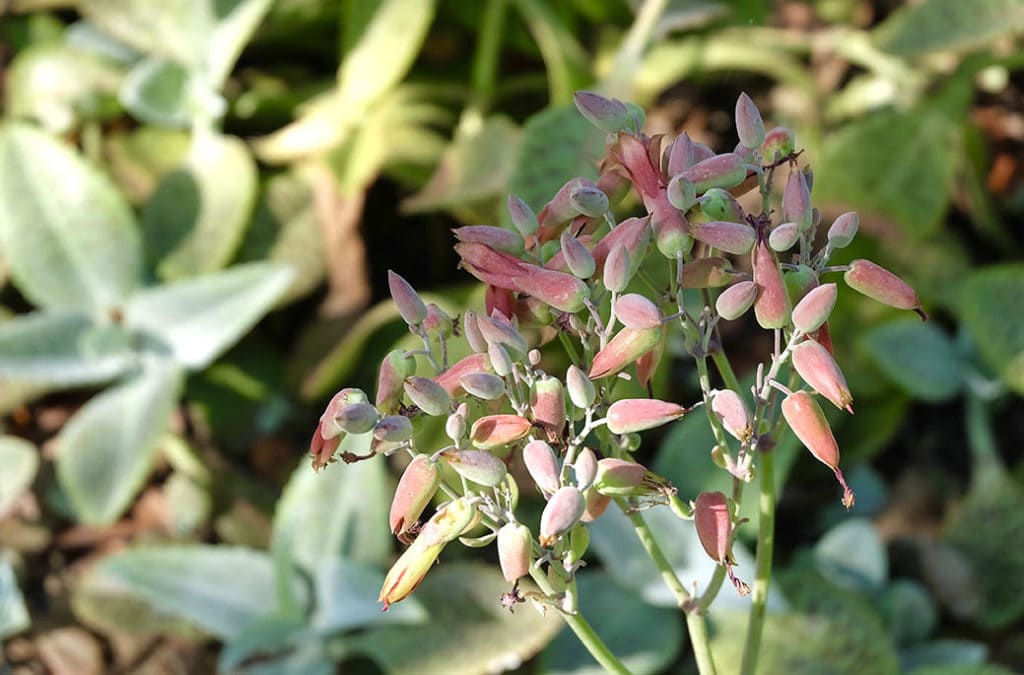
| USDA Hardiness Region: | 10–12 |
| Sun: | Bright, indirect sun |
Kalanchoe is native all over the world, including America, Southeast Asia, and Africa. This plant is best if you live in warm temperatures with very little frost, if any at all. Kalanchoe does not tolerate frost, but it needs a moist environment.
The appearance of this plant is very pretty. It has leaves that are either smooth or felted, depending on the species. The flowers are often showy and come in many colors. Pink, orange, yellow, red, and white are the most common colors you can find.
- Beautiful colors
- Can survive extreme heat
- Does not tolerate cold or frost
12. Sempervivum
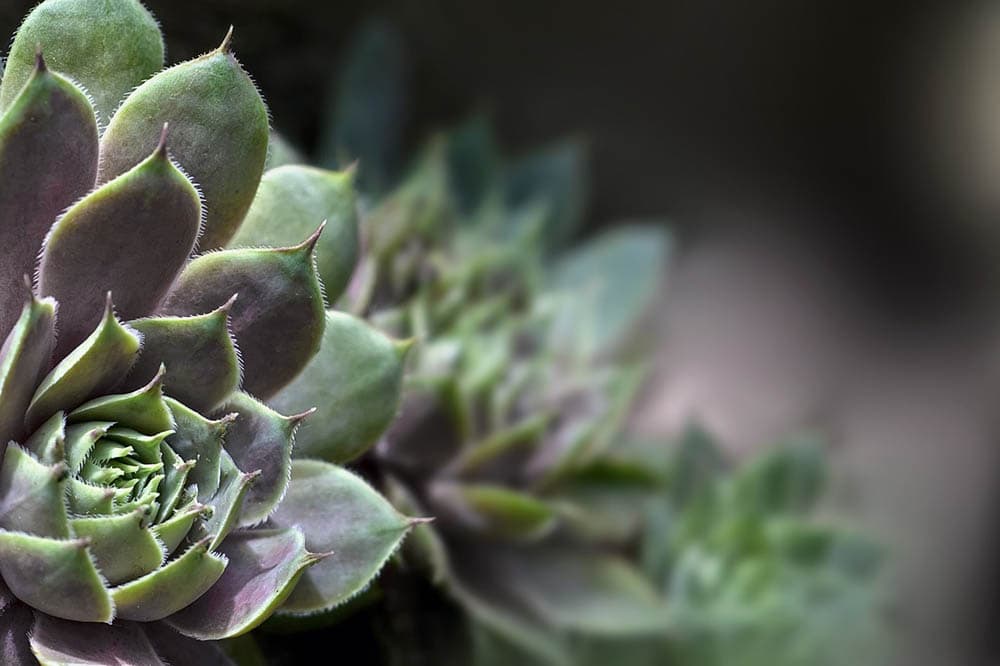
| USDA Hardiness Region: | 4–9 |
| Sun: | Full sun |
Sempervivum is one of the most popular succulents because it can withstand cold, windy, and drought environments. In fact, it can survive in hardiness zones 4–9, making it an option for many homes throughout the nation.
The one thing is that Sempervivum needs sandy or gravelly soil. Lava rock is frequently paired with Sempervivum to add additional drainage. If you don’t want to adjust your soil, you can always grow Sempervivum in pots instead.
- Can survive many environments
- Hardy
- Needs a lot of drainage
13. Senecio
| USDA Hardiness Region: | 3–9 |
| Sun: | Indirect sun |
Senecio comes in about 100 species. Some species are super popular and recognizable to those who don’t know much about plants. The most popular species include Blue Chalk and Fish Hooks. Because of how many species there are, Senecio can grow just about anywhere.
Oddly enough, Senecio is a part of the Daisy family. You can grow them in your garden, but you can also grow them in hanging plants. The options are practically endless with this plant due to the sheer number of species available.
- Dozens of species available
- Can grow in many environments
- Cannot be placed in direct sun
14. Euphorbia
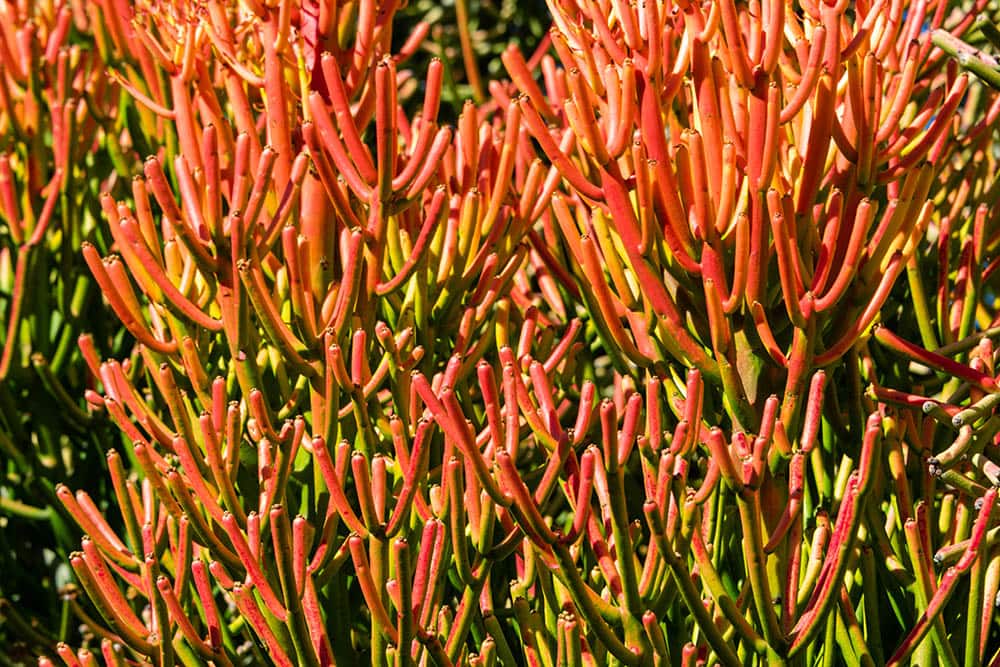
| USDA Hardiness Region: | 4–8 |
| Sun: | Full sun to partial sun |
Euphorbia almost looks like little Christmas trees. There’s actually a very good reason why Euphorbias look this way—Poinsettias are a type of Euphorbia. As you might figure from the Poinsettia, Euphorbia can grow in mild climates.
There are dozens of other Euphorbias to consider, and they come in many shapes. Some look like a cactus, whereas others have striking appearances. You can easily make Euphorbia the center of your garden or simply use it as a background plant.
- Many species available
- Familiar look
- Adjust plant to your gardens needs
- Does not tolerate heat as well as other succulents
15. String of Pearls
| USDA Hardiness Region: | 9–11 |
| Sun: | Direct or indirect sunlight |
Last up on our list is the String of Pearls. The String of Pearls isn’t its own type of succulent. Instead, it is technically a type of Senecio, but these leaves are super interesting, which is why we are mentioning String of Pearls on their own.
As its name suggests, String of Pearls has a modified leaf that looks like pearls. The leaves look like little balls that are attached to a string. These dangling stems make String of Pearls a great option for hanging baskets and other similar locations.
- Unique look
- Beautiful cascading appearance
- Not ideal for ground growth
Succulent Growing Tips
Even though succulents are fairly hardy, it can still be difficult to grow them outdoors if you’ve never grown them before. Here are three succulent growing tips to keep in mind:
Research Plants Thoroughly
Before you plant any succulents in your yard, make sure to research individual plants thoroughly. Each plant will have its own soil, light, nutrition, and humidity needs. By researching the plants thoroughly, you can find plants with needs that perfectly match your yard and environment.
Check USDA Hardiness Zones
Pay close attention to the USDA hardiness zones that each plant grows in. These zones tell you how long the plant will survive as the temperature drops. Select plants that fall within your hardiness zone so that your succulents don’t die over the winter.
Allow Extra Space for Growth
Planting succulents can be a bit difficult. These plants often grow to be a lot bigger than they first appear. Make sure that you add extra space in between each plant for growth. This is especially true for succulents that grow outwards.
Conclusion
We hope that this article has helped you gain knowledge about some of the best succulents to grow outdoors. All of the plants above are known to thrive in outdoor conditions, even when the environmental conditions are outside your control.
Make sure to research the plants thoroughly beforehand to match the succulents to your environment. From there, make sure to provide the succulent with just the right environment and placement for it to grow healthily.
Featured Image Credit: Chesna, Pixabay
Contents



